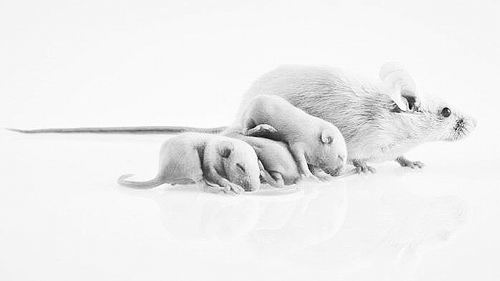Gene "scissors" speed up specific genetics researchers to complete experiments in mammals for the first time July 12, 2018 Source: Chinese Journal of Science CRISPR increases the chances that female mice will pass specific genes to their offspring. Image source: ISTOCK Recently, researchers have used the genomic technology CRISPR, called the gene "scissors", to accelerate the inheritance of mammalian specific genes. This highly controversial gene-driven strategy was demonstrated several years ago in laboratory-raised insects. Because it can spread a gene quickly throughout the species, it has spurred the dream of using deadly genes to eliminate pests such as malaria. Now, the objects that are being destroyed may also have mammals that can damage crops or cause disease, such as rabbits and mice. However, the purpose of this new study was to create new experimental rat breeds rather than destroy wild populations, suggesting that gene-driven effects on rodents are not as effective against insects. Nonetheless, Paul Thomas, a molecular geneticist at the University of Adelaide in Australia, said it was "an important first step in mammalian gene-driven technology." Recently, the team of geneticists Kimberly Cooper of the University of California, San Diego, published the study on the preprinted server bioRxiv. The team includes Ethan Bier and Valentino Gantz, who demonstrated that CRISPR technology could be an efficient gene driver for fruit flies three years ago. The team said it has submitted the research to peer-reviewed journals. “This is a very good study and it makes a lot of sense,†said Gaetan Burgio, a mouse geneticist at John Curtin Medical School in Canberra, Australia. “We don’t know anything about the genetic drive of rodents. We all think It is the same as the fly, but the results are quite different." Researchers at the University of California, San Diego designed a female mouse carrying the DNA-cleaving enzyme Cas9 and a male mouse carrying a guide RNA (gRNA), which can transport Cas9 to a specific target of the genome, plus a color that can be modified Gene. Cas9 and gRNA are two components of CRISPR. After Cas9 is cut, one cell repairs the damage and it is the key to gene-driven success. This cell can either rejoin the cleaved DNA strand or make up the gap by inserting a new DNA fragment, a process known as homologous directed repair (HDR). The researchers used a basic biological phenomenon to force cells closer to HDR. During the meiosis, they controlled the Cas9. This cell division process helps to produce sperm or eggs. During meiosis, chromosomes naturally exchange DNA, and during these exchanges, cells only allow HDR. The results show that this strategy is ineffective in males, probably because spermatogonia undergo normal mitosis before meiosis. But in females, the gene drive was successful. It replicates the coat modification genes of many egg cells onto the partner's chromosome, which significantly increases the chances that the offspring will inherit the gene. In a female, 79% of the egg cells eventually carry a coat modification gene on both chromosomes. If it is mated with a male without the gene, approximately 90% of the pups will inherit the gene. Cooper et al. write that this strategy can accelerate the development of mice with introduced or damaged genes. Michael Wiles, head of the technical assessment and development department at Jackson Laboratory, the world's largest producer of transgenic mice, said the method may be "very useful". Many human diseases are caused by several genetic aberrations, and mouse models are made. Imitating these diseases is slow and difficult. Wiles said that with such gene-driven technology, five years of work can be completed in one year. Although the purpose of this new study is simply to design experimental rats, MIT evolutionary biologist Kevin Esvelt said that this made him worry. He believes that mice formed by this technology may be released into the wild and have adverse effects. “It’s disturbing that the study did not explicitly mention safeguards,†Esvelt said. However, gene drive may stop spreading in the herd after several generations. Because the genes for Cas9 and gRNA are on different chromosomes, they gradually separate and fail. In the pre-printed text, the researchers highlighted the continuing challenge of creating efficient gene-driven for wild mammals. They concluded: "It may be too early to say that genetic drive will soon be used to reduce the optimism or anxiety of the number of invasive rodents in the wild." Chinese Journal of Science and Technology (2018-07-12 2nd Edition International) The Laser Distance Meter is precise measuring tools with high accuracy and 100m long distance. The laser distance measurer can be used indoor and outdoors. It's widely used in many areas, specially in construction industry, thanks to the IP54 dust and water resistant. The digital height measurement device Laser Distance Meter 100M,Laser Meter 100M,Laser Measure 100M Range,100M Laser Distance Meter Chengdu JRT Meter Technology Co., Ltd , https://www.rangingsensor.com
Why Our 100m Laser Distance Measurer?
1. Long range: 0.03-100m.
2. High Accuracy. The accuracy can achieve ±1.5 mm.
3. Multiple Functional Designs: can be used to measure distance, area, volume, angle, and Pythagorean measurement. Also can add function: Bluetooth, USB charge, voice, touch screen etc.
4. IP54 waterproof rating and dustproof